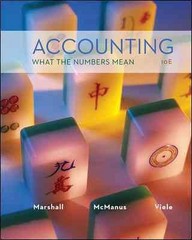Hi there. Would you help same type of questions for me? 
BACKGROUND: Audit standards require that several levels of review occur. The senior accountants' review is required to ensure that the staff has performed the required audit procedures and that findings and conclusions are well documented. Managers and partners review at a higher level. Their intent is to ensure that GAAS has been applied and met, that conclusions are appropriate, and that the working papers all tie together and no open items exist. A second partner is required to ensure that the quality control process has been met and to provide another opinion on the application and meeting of GAAS requirements. EKH Industries was audited by BK&D CPAs. Four different individuals performed reviews of the working papers: Sarah A., Emily R., Laura B., and Joe J. Emily's review comments included inconsistent amounts between working papers for the same accounts; for example, the gain on the sale of assets did not match between the property working papers and the cash flow support. Laura's comments indicated inconsistent trendssome working papers talked about rising labor costs while others discussed layoffs of plant personnel. Joe documented that cutoff was not properly tested for cash accounts and that accounts receivable testing was missing a conclusion. Sarah indicated that signoffs were not appropriate, the working papers were not dated appropriately, and the drafts had been issued too early. 1. Who is the BK&D CPA senior auditor in this case? 2. Who is the BK&D CPA concurring (second) partner in this case? 3. Who at BK&D CPA is reviewing the work of Joe J. in this case? 4. Who at BK&D CPA is the engagement partner in this case? BACKGROUND: A subsequent event refers to an event that occurs after the date of the audited balance sheet but prior to the date of the auditors' report. Subsequent events can be divided into two broad categories. The first are those that provide additional evidence about facts that existed either on or before the balance sheet date (Type I events). The second are those that involve facts that came into existence after the balance sheet date (Type II events). Type I events require adjustment to the financial statements while Type II events only require financial statement disclosure. Dillon & Company CPAs are auditing the financial statements of PDQ Manufacturing as of December 31, 2009. During the fieldwork of its audit (March 2010), the auditors noted the following situations: A major customer who owed PDQ $10,000 in accounts receivable (a material amount) filed for Chapter 7 bankruptcy. A warehouse where the customer stored some of its inventory for resale had a fire. Estimated damage could not yet be quantified. In addition, the company's board treasurer was killed in a tragic plane crash. Dillon & Company is now ready to issue its audit opinion. 1. What should Dillon & Company CPAs do as a result of the customer bankruptcy? 2. What type of subsequent event is the death of the board treasurer? 3. Does the death of the board treasurer require an adjustment to the 12/31/09 financial statements? 4. What should Dillon & Company CPAs do to adjust the financial statements for the fire in the warehouse







